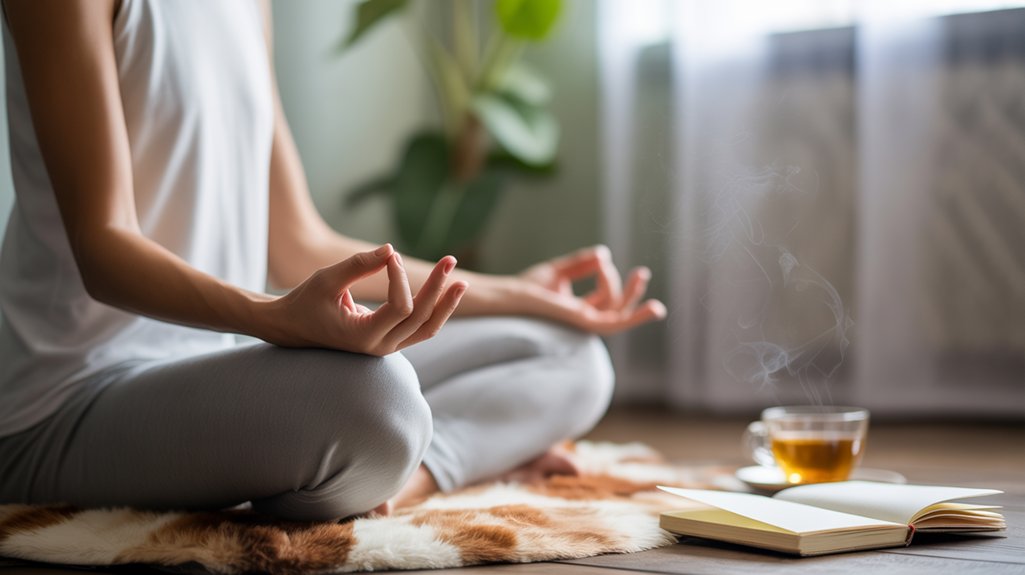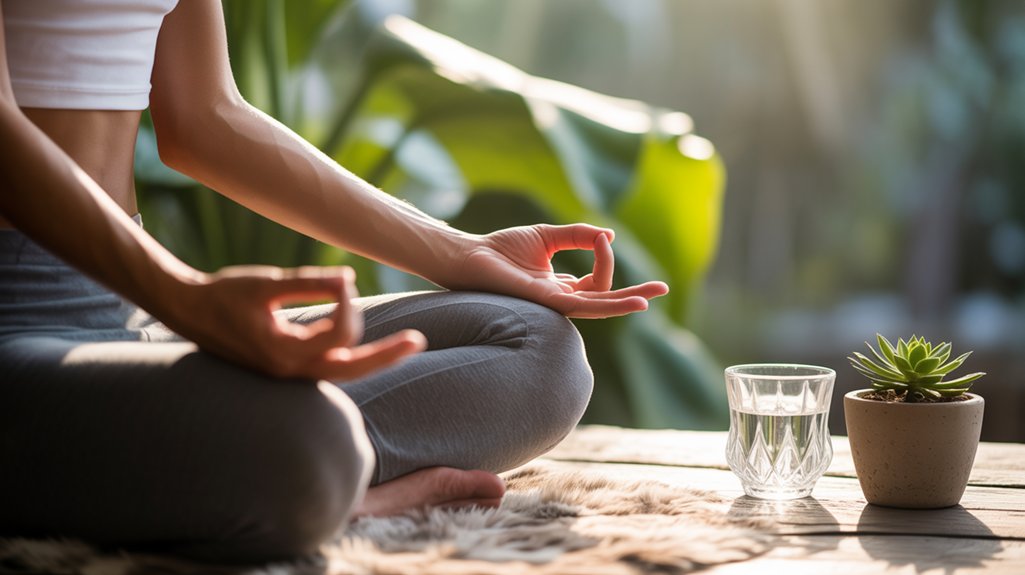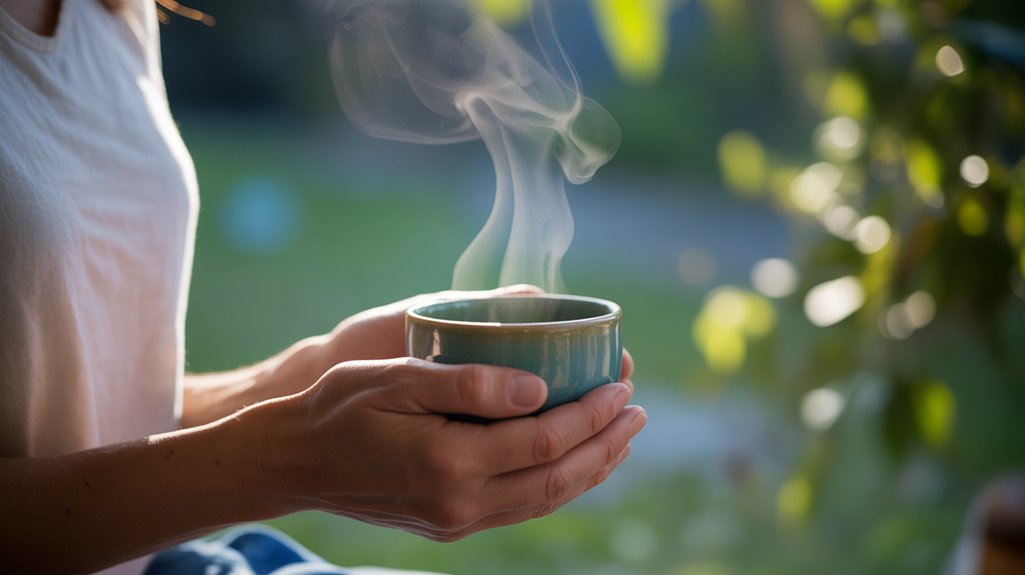Anxiety can weigh heavily on your mind and body, making it hard to find peace. But have you ever considered how simple breathing techniques could help? By understanding the science behind these practices, you might discover effective ways to manage stress. There are a few straightforward exercises that can activate your body’s natural relaxation response. Curious about how to integrate these techniques into your daily life for lasting benefits? Let’s explore further.
Understanding Anxiety and Its Impact

Anxiety can feel like a heavy weight pressing down on you, shaping your thoughts and actions. It creeps into your mind, distorting your perception of reality and making everyday tasks seem overwhelming.
You might find yourself constantly worrying about what could go wrong, leading to a cycle of fear and doubt. This emotional burden doesn’t just affect your mental state; it can also manifest physically, causing tension, fatigue, and even headaches.
You may notice changes in your sleep patterns or appetite, which can further exacerbate your anxiety. Understanding these impacts is crucial.
The Science Behind Breathing Techniques

When you focus on your breath, you tap into a powerful tool for calming your mind and body. Breathing techniques work by influencing your autonomic nervous system, which regulates involuntary functions like heart rate and digestion.
When you take slow, deep breaths, you activate the parasympathetic nervous system, promoting relaxation and reducing stress. This shift helps lower cortisol levels, the stress hormone, and encourages feelings of safety and calm.
Additionally, controlled breathing increases oxygen flow to your brain, enhancing cognitive function and emotional regulation. You’re not just breathing; you’re signaling your body to shift away from fight-or-flight responses.
Understanding this science empowers you to harness your breath, giving you a proactive approach to managing anxiety effectively.
Simple Breathing Exercises to Try

Harnessing the power of your breath can be made simple with a few effective exercises.
Start with the 4-7-8 technique: inhale through your nose for four counts, hold your breath for seven, then exhale through your mouth for eight counts. Repeat this cycle four times.
Next, try diaphragmatic breathing. Sit or lie down comfortably, place one hand on your chest and the other on your belly. Inhale deeply through your nose, letting your belly rise, then exhale slowly through your mouth. Aim for five minutes of this practice.
Finally, practice box breathing. Inhale for four counts, hold for four, exhale for four, and pause for four. This structured approach helps calm your mind and reduce anxiety effectively.
Incorporating Breathing Techniques Into Your Daily Routine

Incorporating breathing techniques into your daily routine can significantly enhance your overall well-being. Start by setting aside a few minutes each day, perhaps in the morning or before bed.
You can practice deep breathing while sitting quietly or even during a short break at work. Try to connect your breathing exercises with activities you already do, like brushing your teeth or waiting for your coffee to brew. This helps create a seamless habit.
Whenever you feel stressed, take a moment to focus on your breath; inhale deeply through your nose, hold for a few seconds, and exhale slowly through your mouth.
The key is consistency—make these techniques a natural part of your day, and you’ll soon notice the positive effects.
Benefits of Regular Breathing Practice

Regular breathing practice offers a myriad of benefits that can profoundly impact your mental and physical health. By consistently engaging in deep, intentional breathing, you’ll lower your stress levels and promote relaxation.
This practice can enhance your focus and concentration, allowing you to navigate daily challenges with clarity. Additionally, it can improve your lung capacity and overall respiratory function, leading to increased stamina.
You might also find that it aids in regulating your heart rate and blood pressure, contributing to better cardiovascular health.
Over time, regular breathing exercises can cultivate a sense of mindfulness, helping you stay grounded and present. Embracing these techniques can truly transform your overall well-being and empower you to manage anxiety more effectively.
Additional Resources for Managing Anxiety

How can you effectively manage anxiety beyond breathing techniques? Consider incorporating mindfulness meditation into your routine. Apps like Headspace or Calm offer guided sessions that can help you stay grounded.
Journaling is another powerful tool; it allows you to express your thoughts and feelings, providing clarity and relief.
Physical activity plays a crucial role too; whether it’s a brisk walk or yoga, moving your body can release endorphins and reduce stress.
Additionally, don’t hesitate to seek professional help. Therapists can provide tailored strategies and support.
Finally, connecting with others—friends, family, or support groups—can alleviate feelings of isolation. By exploring these resources, you’ll build a comprehensive toolkit for managing anxiety effectively.
Conclusion
Incorporating breathing techniques into your daily routine can make a significant difference in managing anxiety. By understanding how these exercises activate your body’s relaxation response, you can cultivate a greater sense of calm and emotional regulation. Remember to practice techniques like the 4-7-8 method or box breathing whenever you feel overwhelmed. With consistency, you’ll notice improvements in your focus and overall well-being. Take a deep breath—your journey to a more peaceful mind starts now!


